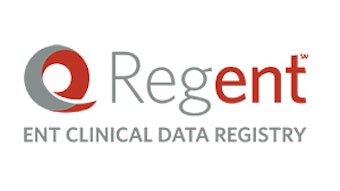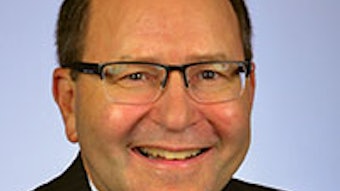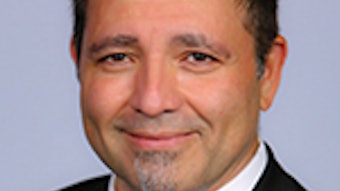Advocacy in Action: AAO-HNS comments on CY 2019 Medicare Physician Fee Schedule proposed rule
On July 12, 2018, the Centers for Medicare & Medicaid Services (CMS) released the CY 2019 proposed rule for the Medicare Physician Fee Schedule (MPFS).
On July 12, 2018, the Centers for Medicare & Medicaid Services (CMS) released the CY 2019 proposed rule for the Medicare Physician Fee Schedule (MPFS). While previous years’ regulations for the Quality Payment Program (QPP) were released independently, the 2019 MPFS proposed rule also included proposals related to the QPP.

CMS proposed an updated CY 2019 conversion factor of $36.0463, which reflects the 0.25 percent update specified by the Medicare Access and CHIP Reauthorization Act (MACRA) and a budget neutrality adjustment of -0.12 percent. Overall, there was a slight increase from the 2018 conversion factor of $35.9996. The proposed rule also outlined the agency’s broad-reaching attempt to replace existing E/M coding documentation guidelines for office and outpatient visits by collapsing payments from five levels to either two or three levels. Further, the rule proposed a 50 percent multiple procedure reduction when reporting an E/M service and a procedure on the same date.
Among the proposed updates to the QPP, the Merit-based Incentive Payment System (MIPS) portion of the rule retained the low-volume threshold with a new criteria (<200 covered professional services to Part B patients), as well as an opt-in mechanism. Mandatory use of 2015 Edition certified EHR technology (CEHRT) for Year 3 was also proposed, as well as payment adjustments as high as +7 percent or as low as -7 percent. The rule further modified the weighting for the four performance categories: Quality—45 percent; Cost—15 percent; Promoting Interoperability (formerly Advancing Care Information)—25 percent; and Improvement Activities—15 percent.
In the weeks leading up to the AAO-HNS’ submission of comments to CMS, Academy physician leaders and Advocacy staff carefully reviewed the 1,472-page proposed regulation to determine its impact on practicing otolaryngologists, while attending numerous strategy discussions and an in-person meeting with CMS officials. In order to develop comprehensive comments, the AAO-HNS collaborated with various stakeholders, including medical societies, practice administrators, industry representatives, and physician experts. In August, the AAO-HNS also joined 170 co-signatories from the house of medicine in sending a comment letter to CMS expressing concerns about the proposal to collapse payment rates for E/M services, as well as opposition to payment reductions for procedures reported on the same day as an E/M service.
On September 10, the AAO-HNS submitted its formal comments to CMS. We thanked the agency for its efforts to reduce the regulatory burden on physicians via its “Patients Over Paperwork” initiative and urged continued efforts to simplify documentation requirements for office and other E/M visits for new and established patients. However, the AAO-HNS highlighted key areas of the proposed rule that could potentially have a negative impact on the practice of otolaryngology, providing extensive rationale and data to support our arguments. Specific areas of concern included:
- E/M Code Collapse: While the AAO-HNS concurred that five levels of E/M coding could appropriately be reduced, for a change of this magnitude, the AAO-HNS recommended utilizing a process similar to the current CPT/RUC structure where all stakeholders have the opportunity to be heard. The Academy expressed concerns that the development of an E/M Practice Expense per hour and resulting Indirect Practice Cost Index (IPCI) distorts the relativity of the RBRVS and has massive unintended payment effects across the physician fee schedule.
- Application of Multiple Procedure Payment Reduction (MPPR) to E/M services: The AAO-HNS strongly opposed the addition of E/M office visit codes (99201-99215) to the surgical multiple procedure payment indicator list. After performing a detailed review of the specialty’s most commonly billed codes, the Academy concluded that the medical community and CMS have worked appropriately and diligently under the current system to remove any overlap in the physician work and practice expense for procedures commonly performed during the same encounter as an office visit. The in-depth analysis specifically addressed:
- 30901 – Control nasal hemorrhage, anterior, simple (limited cautery and/or packing) any method
- 31231 – Nasal endoscopy, diagnostic, unilateral or bilateral (separate procedure)
- 31575 – Laryngoscopy, flexible; diagnostic
- 69210 – Removal impacted cerumen requiring instrumentation, unilateral
- 69220 – Debridement, mastoidectomy cavity, simple (e.g., routine cleaning)
- 31579 – Laryngoscopy, flexible or rigid telescopic, with stroboscopy
- Balloon Sinus Surgery Kits (SA106) and Sinus Dilation: Per a specific request for comment by CMS, the AAO-HNS sought out and received input from multiple sources regarding the composition and pricing of currently utilized balloon sinus surgery kits. In addition, the Academy collected information on the actual number of sinus dilation procedures that typically can be performed per balloon. Based on the data gathered, the Academy urged CMS to consider the creation of a separate HCPCS code for the balloon sinus surgery kit that would be billable based on the number of balloons actually used per patient. However, should CMS elect to preserve the current policy of assigning a fixed number of sinus dilations per kit, the AAO-HNS recommended maintaining the current system that allows one kit for every two sinuses.
In addition to the above key items, the Academy’s comments addressed physician work (i.e., fine needle aspiration codes, removal of impacted cerumen, and PE direct input refinements), global surgery codes, and telemedicine. The AAO-HNS also provided extensive comments regarding the proposed changes to the QPP. Some of the topics addressed included measure licensing requirements, QCDR definitions, the MIPS self-nomination period, topped-out QCDR measures, QCDR benchmarks and MIPS scoring, measure development, promotion of interoperability, facility-based reporting by specialists, and MIPS web interface measures.
Looking ahead, CMS is expected to release its final rule on the MPFS in early November. The AAO-HNS is hopeful CMS will heed the Academy’s recommendations detailed in our comment letter, many of which are shared throughout the house of medicine. To read the AAO-HNS comments and learn more about the Academy’s Medicare advocacy, please visit www.entnet.org/advocacy or contact healthpolicy@entnet.org.











